
日中友好大学生訪中記 A Chinese Government Project!
English version is available following Japanese sentences!
こんにちはMisakiです。私は中国政府の要請を受け正式に日本人大学生を中国に派遣するプログラムに選抜され、2019年3月に訪中の経験をさせていただきました。とっても素晴らしいプログラムで、楽しい思い出が沢山できたので今回はそのことについて書いていこうと思います。
プログラムの説明
日中友好大学生訪中団について
(公社)日中友好協会は、中国政府の要請を受け、「日中友好大学生訪中団」(1団100人規模)を毎年派遣しています。日本の大学生に自らの「五感」で中国の文化や生活習慣を体感してもらうこと、また中国の大学生との交流を通じてより客観的に中国を理解してもらうことを目的としています。将来の両国関係を担う人材育成の場としても大いに役立てたいと考えています。
私はこのプロジェクトの存在を友達に紹介してもらい知りました!応募要項はこちら!基本的には、中国に興味のある日本全国の大学生が対象です!詳しいことはしっかり確認してくださいね!まずはこのプロジェクトの概要を書いていきます。
①ほぼ無料で約1週間の訪中ができる
まずこのプログラムの魅力的なポイントはかかる費用は参加費の1万円のみというところです!学生という立場からするととってもありがたいです!!6泊7日で、泊まるホテルや食事をするレストランは5つ星や同レベルの有名どころばかり!普通これだけの贅沢な旅をしたら○十万掛かってしまうだろうといったレベルでした。

②中国の3都市を訪問
無料と聞いただけでもすごいのに、中国の3つの都市(私が参加した際は北京、深圳、広州)に行き様々な体験をすることができました。普段の旅行では気軽には行けない大使館やHUAWAYの本社見学なども訪中に含まれていて、はっきり言って最高でした。中国、日本政府団体の重役とその関係者とお会いしてお話しできるチャンスもたくさんありました。
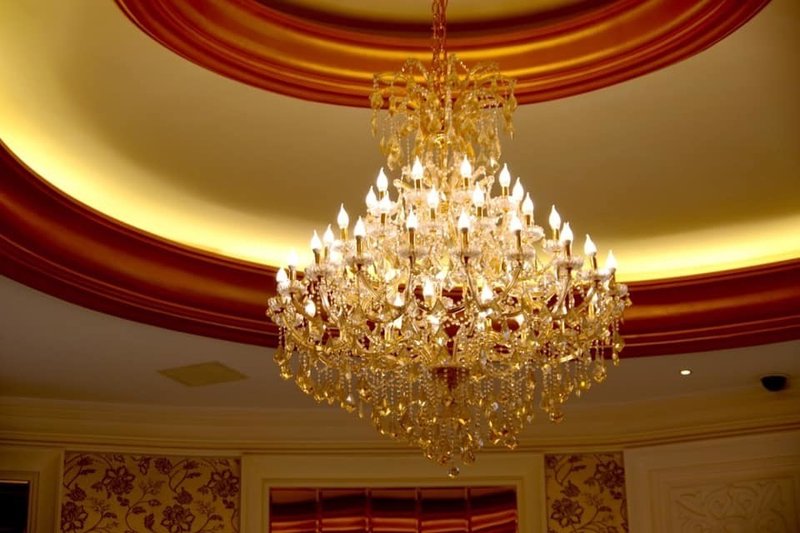
(肖像権配慮して精一杯のシャンデリアで高級感を伝えます。)
③毎年2回100人の日本大学生を一斉に派遣
毎年2回100人の日本大学生を一斉に派遣し、その全員の渡航費や食事代その他すべてを負担してくれるという、なんとも豪華で大胆なプログラムです。(団体の1回の派遣代は5000万越えという噂も耳にしました。)100人が同時に派遣される際の良い点は日本全国から来た同じ年代の大学生とかなり密度の高い1週間を過ごすことができることです。実際にプログラム開始時は1人も知り合いがいなかったのですが、プログラム終了時にはグループ全員と
とっても仲良しになりました。わざわざ県を超えて、東京に集まって会うような仲になりました!

④安全
初めて中国に行く人にとっては不安な要素もたくさんあるかもしれませんが、この団体は事務局の方々10名が同伴し、最大の注意を払いサポートしてくださり、何かあったらすぐに対処してくれます。
バス移動の際についてくださった事務局の方々も優しくて面白くてとっても好きでした^^
⑤倍率などについて
もちろん毎年変わるとは思いますが、参考までに私が派遣された際は応募人数は約400人だったそうです!そのなかの100人の中の1人に選ばれました。倍率は約4倍ですね!私の知り合いでは3回連続で応募して選ばれたなんて人もいました!
両国間の相互理解と親睦を深めるため、多くの中国人学生や政府の関係者の方々との交流の場を持てたことはとても貴重な体験でした。少し長くなりますが、私の体験や考えをつらつらと書いていこうと思うので読んでいただけたら幸いです。
中国への興味
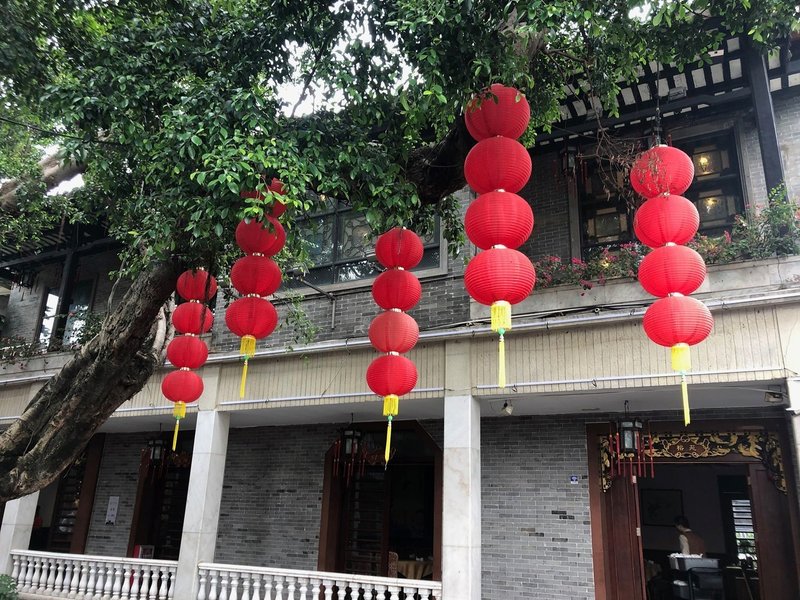
中国へ強い興味をもったのはアメリカに留学した際でした。たくさんの在米中国人に会い、友達もできたので中国語を少し教わったりしました。
しかしそれらの経験によって中国の文化が好きになったと言うわけではありませんでした。とにかく不思議で未知な感じの興味の持ち方でした。理由としては、情報が制限されている為、何が正しく何が間違っているのかあまりわからなかったという点もあります。そして実際自分の目で中国本土を見てみたいと思うようになりました。
上記の動機で今回の日中友好大学生訪中団に応募し、推薦者の先生のご好意と運に恵まれ約400人の候補者の中から選んで頂きました。中国の3つの都市(今年は北京、深圳、広州)に行き様々な体験をすることが可能なプログラムなのでとても嬉しかったです!ちなみに毎年2回100人の日本大学生を一斉に派遣し、渡航費や食事代その他すべてを負担することが可能な中国政府の経済力は凄まじいと思います。
日本にいる間私は6班に属し全ての準備やオリエンテーション、トレーニングを終え、日本を出発しました。
大気汚染について
中国の北京に到着した時、まず初めに驚いたのは快晴の空です!大気汚染の話はとても有名なので、北京の空の広さと雲ひとつない快晴の天気には驚かされました!
正直、深圳の大気汚染は目に見えて分かるものでした。広州も霧と大気汚染のダブルパンチでした、場所や日によって変わるのかもしれません。
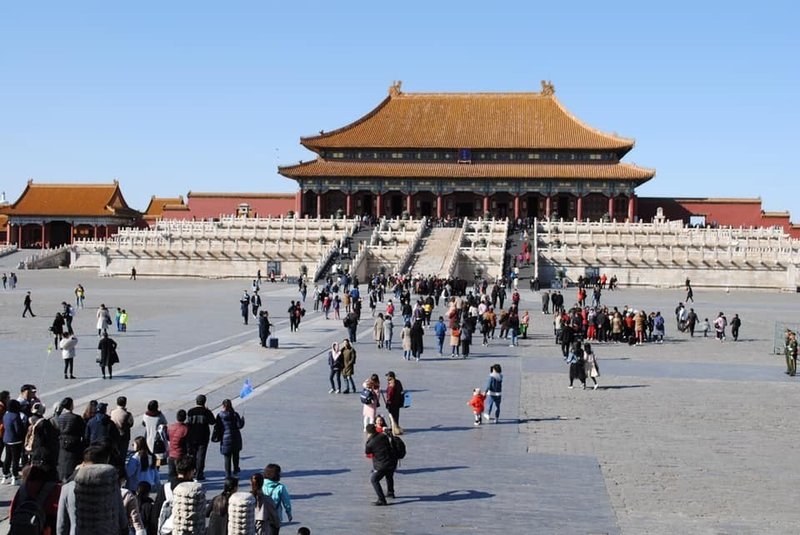
故宮博物院

故宮博物院は明代の皇室であり、ラストエンペラーの映画で有名な場所です。面積は約78万平米もあり、例えていうと、初めて奈良の東大寺の本殿を見た時の衝撃が5回くらい繰り返されるようなダイナミックな景色の連なりでした。
中間村創業大街見学
2日目の中間村創業大街見学では中国の中でも最先端の技術を誇るこの地域がどのように発展を始めたか、そしてバラエティ豊かな発明品と億万長者の会社たちがどういう形で存在しているかを見学しました。このエリアでは、ある起業家が小さなコーヒートラックカフェを始めたのがきっかけだそうです。ただのカフェではなく、起業家やエンジニア、資本家がアイディアを出し合い改革を始めるための戦略的カフェだったそうです🍰☕️
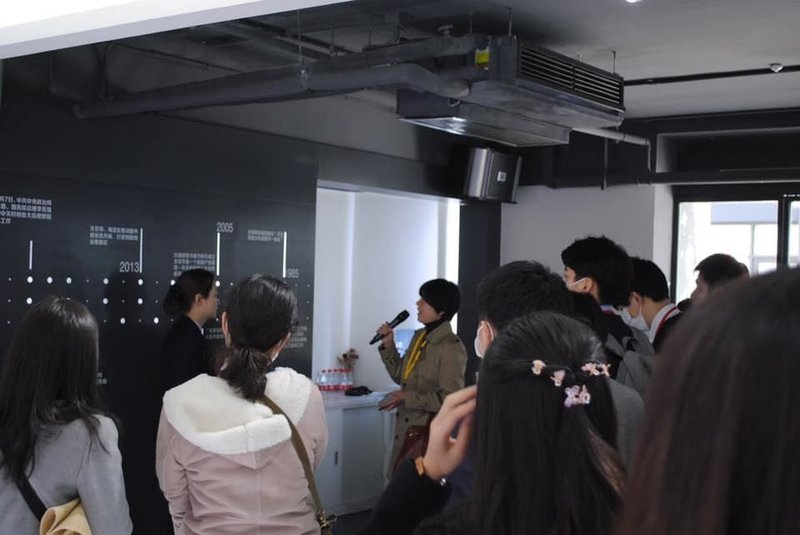
泥人形のペインティング体験
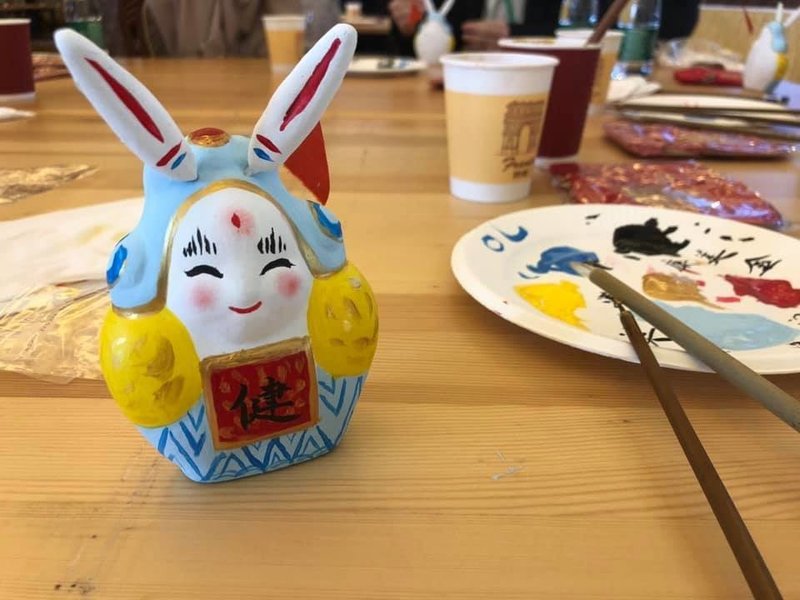
中国の伝統工芸品である泥人形のペインティングは人間国宝の方から直々に教えていただき、自分なりの作品を作る体験をすることができました。赤や金色をあしらってとても中国っぽい作品が作れて楽しかったです。
万里の長城

中日に行った万里の長城はとても大きくて長いので、正直に写真にも映えず、体力にも限界を感じました!(笑)
ただ、壁というのは個人的にパワーワードだと思っていて、トランプ大統領の作ろうとしている密入国を阻止する目的の壁やベルリンの壁など、歴史文化的に大変重要な意味を持ちます。
日本のような島国とは違い、大陸国であるが故の対立や戦争、違法移住、様々な問題を阻止しようと必死で積み立てて自国を守ろうとする人々の気持ちは、日本人にとっては一歩踏み込まないと分かりにくいものなのだと思いました。しかしこの規模の壁を勢いよく作ってしまった始皇帝の権力を想って観る景色は圧巻でした。
深圳
その後移動した深圳は発展した若者の街です。「中国のシリコンバレー」と呼ばれ、香港に近く、人材が豊富で、サプライチェーンの川上から川下までの企業がそろっているため、電子製品を作る上で好都合な場所だそうです。
ファーウェイの本社見学
ファーウェイの本社見学はこの訪中で一番印象に残ったものになりました。(残念ながら写真撮影は禁止でした)
中国ではビックデータ、クラウドicp事業に参入し、国土面積が広く人口の多い中国ならではの都市問題 人口問題 交通問題などに取り組んでいました。
例えば、監視システムのあるゴミ箱です。事前にデータ登録がしてあり、ゴミがいっぱいになったら知らされることで、より効果的に社会のリソースを分布できるという仕組みです。また、各自治体のガバナンスは各自でしてきた中国ですが、データの共有などが生まれ、出稼ぎの方々への手続きの簡略化などを実現しています。サッカーの試合をするにも道路の交通情報 、騒音、観客数、トラブル、食事の画像、災害の対応、犯罪事件の対応などを一括してデータ管理するため、中国のスマートシティの実現を目指しています。デジタルパイプ により漏洩や火事の防止、どこにパイプの不具合があるかわかるなど、スマート石油運輸にも大きな可能性を見ていました。スマート金融のコンセプトのもと色々な国々でデータを収集するデータセンターもあります。ファーウェイは収益の10%を開発研究に費やす、未来への投資を大切にする会社だそうです。
中国の大学生との交流
そのほかにも中国の大学生との交流も盛んに行いました。中国の大学生は寮暮らしが多く、一部屋6人でシェアしてると聞きました。そのためとても仲が良く、勉強も夜の9時までするのが日課、バイトをしている学生が1人もいないという現実でした!学習に価値を置き、将来の投資でボランティアやインターンシップをする学生が大半でした。中国の学歴社会の印象が強まったと同時に、日本の大学はクリエイティブで面白い学部やプログラムが多いことにも気づきました。
最後に、私の属した班をはじめ、プログラム中共に過ごしたみんなとは、アイディアを出し合い、協力しながらたくさんの思い出を作りました。日本全国から将来の日本を担っていくような、すでに多くの実績を持つ同い年程の大学生と仲良くなることができました!
長くなりましたが、初の中国本土訪問はユニークで刺激の多い経験となりました!質問等ありましたら是非なんでもお答えします!
募集要項の対象者なら、ぜひ応募することをお勧めします!
English version
I was selected to participate in a program to dispatch Japanese college students to China, under the request from the Chinese government-affiliated with the Japan-China Friendship Association.
During the program, conducted in March 2019, I interacted with many Chinese students, people from different cities, and government officials to deepen a mutual understanding and friendship between the two countries. It was a valuable experience.
I will be writing about my experience and opinions, which might be a little long, but I would be happy to read it.
I gained interest in China when I studied in Boston, USA. I don't even have to mention that I was saved many times by the food in Chinatown, with my Chinese friends in the school I was studying with, and with Chinese co-workers who work at an American company that later allowed me to do an internship. With those interactions, I became interested in Chinese culture.
I did not mean that I became fond of Chinese culture. I was more interested in it with a strange and unknown discovery feeling. The reason is that the information is limited, so I didn't know what was right or wrong. And in fact, I came to want to see the mainland of China with my own eyes.
With the reasons I mentioned above, I applied for the Japan-China friendship, a university student visiting China. I was selected from about 400 candidates. I was thrilled to be able to go to three cities in China (Beijing, Shenzhen, Guangzhou this year) and have various experiences! Furthermore, it was a beautiful program from the student point of view that the cost involved is only $100 total. I think that the Chinese government's economic power, which can dispatch 100 Japanese university students twice a year, and pay for travel expenses, meals, and everything else, is tremendous. While in Japan, I belonged to group 6, finished all preparation, orientation, and training, and left Japan.
Air pollution
When we arrived in Beijing, China, the sky was clear, which surprised me because the story of air pollution is very famous, I was amazed by the beautiful Beijing's atmosphere and the sunny weather! (Honestly, air pollution in Shenzhen was visibly perceptible. Guangzhou was also a double punch of fog and air pollution. Of course, this kind of weather condition may change depending on the place and the day.)
The Forbidden city
The Forbidden City is the Imperial Palace of the Ming Dynasty, a place famous for last emperor films. The area is about 780,000 square meters, for example, it was just like when I saw the Todai-Ji Temple in Nara for the first time but five times bigger!
Z-Inno Way village
On the 2nd day of the Z-Inno Way village tour, we saw how the region's state-of-the-art technology in China began to develop, and how various inventions and billionaire companies stay successful. In this area, an entrepreneur started a small coffee track cafe. It was not just a café, but it was a strategic café where entrepreneurs, engineers, and capitalists share ideas and start massive China reforms with technology solutions.
The paintings of dolls
This traditional Chinese crafts were taught directly from the National Treasure person, and I had the experience of doing my works. It was fun to create a typical traditional Chinese-looking artwork with red and gold color 🙂
The Great Wall
The Great Wall, which I went to during the day, was so big and long that It wasn't very photogenic, and I felt the limit of my physical strength! However, I think a "wall" is a powerful word. It has vital historical and cultural significance, such as the wall, for preventing smuggling that President Trump is trying to create and the Berlin wall. Unlike island countries such as Japan, the feelings of those trying to save their own country by desperately making walls trying to prevent conflicts, wars, illegal migration, and various problems are a little unimaginable for Japanese people. However, it was a spectacular sight to see the power of the first emperor who had made this size barrier vigorously.
Shenzhen
Then we moved to Shenzhen; this is the high-tech city with so many intelligent young people. It is called "Silicon Valley in China" and is close to Hong Kong, with a wealth of human resources and companies from upstream to downstream in the supply chain, so it is an excellent place to make electronic products.
Huawei's head office
The tour of Huawei's head office was the most impressive one during this visit. In China, they entered the Big Data and Cloud ICP businesses. They worked on urban problems, population problems, and traffic problems that China has been facing since it has a large land area and a large population.
For example, cleaning is more efficient with their surveillance system.
By registering data in advance and being notified when the garbage is full, people can get it, and by doing so, china can distribute social resources more effectively. Although China has independently done the governance of each local government, sharing of data was realized, and the procedure was simplified for migrants for business. They also aim to understand China's smart city to manage data at once, such as road traffic information, noise, number of spectators, troubles, food images, disaster response, crime incident response, etc. Digital oil pipes have shown great potential for smart oil transportation, such as preventing leaks and fires, and knowing where pipes are defective. There are also data centers that collect data in different countries under the concept of smart finance.
Huawei is a company that spends 10% of its revenue on development research and values the investment in the future.
In addition to that, we also had many exchanges with Chinese university students. I heard that many Chinese university students live in dormitories and share with six people in one room. I was surprised that no student was doing a part-time job. Instead, they are studying until 9 o'clock at night. Most of the students valued studying and volunteered or interned for future investments. At the same time, I noticed that Japanese universities have many creative and exciting faculties and programs.
Finally, with the members from group 6, I belonged to, and with everyone I spent with during the program, we shared ideas and made many memories while cooperating. I was able to get along with university students of similar age who already have many achievements and will be carrying future Japan from all over Japan! I received a lot of inspiration from everyone, honestly. It was not very familiar to see college students speaking all in Japanese, English, and Chinese with confidence on stage in front of over 300 people.
The first visit to mainland China was a unique and exciting experience! If you have any questions, I would love to answer anything!
この記事が気に入ったらサポートをしてみませんか?
